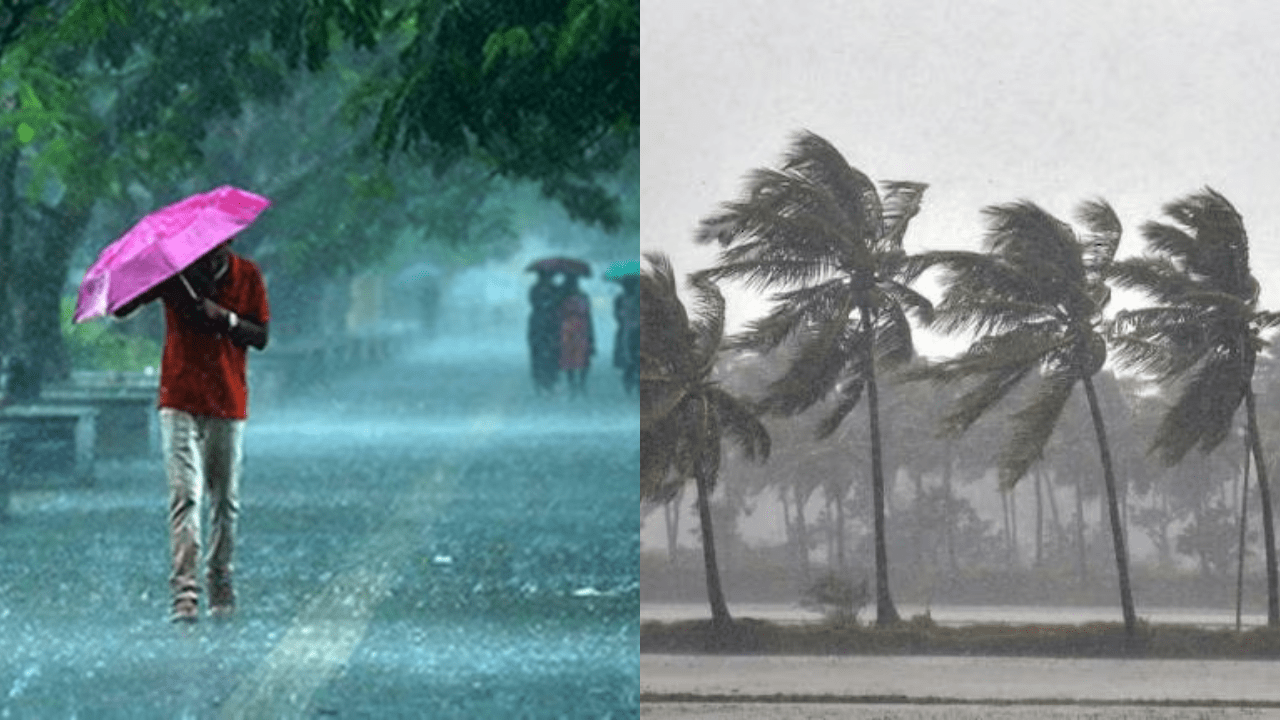Heatwave Grips Northwest, Coastal India Braces for Torrential Flash Floods!

The India Meteorological Department (IMD) has issued a stern warning regarding the upcoming weather conditions across various parts of India. Starting from June 9, northwestern India is set to experience a fresh spell of heatwave, while several coastal regions brace for potential flash floods due to heavy rainfall.
Heatwave Conditions
The IMD’s latest bulletin highlights the onset of a severe heatwave across northwestern India beginning June 9. Regions expected to be significantly impacted include:
- Eastern and East-Central India
- Uttar Pradesh
- Northeastern Madhya Pradesh
The heatwave is anticipated to persist over these areas for the next five days. Additionally, maximum temperatures are predicted to soar between 42°C and 45°C in many parts of eastern Uttar Pradesh, northern Madhya Pradesh, and western Uttar Pradesh, with isolated pockets in Haryana, Delhi, Bihar, and Gujarat also experiencing these extreme temperatures. Notably, these regions are recording temperatures 2-4°C above normal, exacerbating the heatwave conditions.
Specific Observations:
On Friday, maximum temperatures ranged from 43°C to 46°C in southern Haryana, Delhi, southern Uttar Pradesh, southeastern Rajasthan, Madhya Pradesh, and southwestern Bihar. Jhansi in Uttar Pradesh recorded the highest temperature at 45.8°C.
Heavy Rainfall and Flash Flood Warnings
Simultaneously, the IMD has alerted several coastal regions to prepare for flash floods within the next 24 hours due to expected heavy rainfall. The affected areas include:
- Coastal Karnataka
- Kerala
- Konkan
- Goa
The meteorological department warns that these regions could experience surface runoff and inundation in low-lying areas, posing significant risks to life and property.
Rainfall Forecast:
Maharashtra: Heavy rainfall is expected over the next five days, with isolated extremely heavy rain from June 8 to 11.
Karnataka: Coastal and north interior regions are likely to see heavy rainfall during the same period, with particularly intense downpours on June 8 and 9.
Monsoon Advancements
The southwest monsoon has made further progress, bringing a mix of relief and challenges. On June 8, the monsoon advanced into additional parts of the central Arabian Sea, southern Maharashtra, Telangana, and some areas of southern Chhattisgarh and Odisha, as well as coastal Andhra Pradesh.
Monsoon Progress:
- Conditions are favorable for the monsoon to continue advancing into the remaining parts of the central Arabian Sea.
- Further progression into additional regions of Maharashtra, including Mumbai, and Telangana is expected in the next two to three days.

Precautionary Measures and Public Safety
In light of these warnings, it is crucial for residents and authorities in the affected regions to take appropriate precautions. Here are some recommended measures:
Heatwave Precautions:
- Stay hydrated and avoid exposure to direct sunlight during peak hours.
- Wear light, breathable clothing and use protective gear such as hats and sunglasses.
- Check on vulnerable populations such as the elderly and children, ensuring they have access to cool environments and sufficient water.
Flood Preparedness:
- Avoid travel to flood-prone areas and stay informed about local weather updates.
- Secure important documents and valuables in waterproof containers.
- Prepare an emergency kit with essentials such as food, water, medicines, and first-aid supplies.
- Follow official advisories and evacuation orders promptly.
Government and Community Response
Local governments and disaster management authorities are urged to:
Increase Public Awareness: Utilize various communication channels to disseminate information about the impending heatwave and flood risks.
Strengthen Infrastructure: Ensure that drainage systems are clear and capable of handling heavy rainfall to mitigate flooding risks.
Emergency Services: Mobilize resources and personnel to respond swiftly to any emergencies, particularly in regions identified as high-risk.
Environmental and Agricultural Impact
The simultaneous occurrence of heatwaves and heavy rainfall poses unique challenges to the environment and agriculture:
Heatwaves: Prolonged high temperatures can lead to drought-like conditions, affecting water availability and crop yields.
Heavy Rainfall: While beneficial for replenishing water sources, excessive rainfall can lead to soil erosion, crop damage, and delays in planting activities.
Long-Term Considerations
The current weather patterns underscore the importance of long-term strategies to address climate resilience:
Urban Planning: Develop infrastructure that can withstand extreme weather events, including heat-resistant buildings and improved flood management systems.
Agricultural Practices: Promote sustainable farming techniques that enhance soil health and water conservation, reducing vulnerability to both drought and heavy rains.
Climate Action: Support policies and initiatives aimed at mitigating climate change, recognizing the role of global warming in exacerbating extreme weather events.
Conclusion
As northwestern India braces for a heatwave and coastal regions prepare for potential flash floods, it is imperative to stay informed and take proactive measures to safeguard health and property. The IMD’s warnings serve as a critical reminder of the dynamic and often severe nature of weather patterns, emphasizing the need for preparedness and resilience in the face of climate challenges.
Also Read:

The Psychology of Love: Why Valentines Day Matters More Epic Than You Think
Discover the psychology of love and why Valentines Day is more important than you think. Learn how love impacts the brain, strengthens relationships, and boosts

Premier League Highlights: Arsenal Humiliate Man City 5-1, Spurs and Palace Secure Crucial Wins
Arsenal demolished Manchester City 5-1 in a statement premier league highlights win, reigniting their title hopes. Meanwhile, Crystal Palace stunned Man United 2-0, and Tottenham

How Budget 2025 Impacts the Indian Middle-Class: Major Tax Benefits and Glaring Omissions
Budget 2025 offers major tax relief to the middle class, including zero tax on incomes up to ₹12 lakh. However, it misses out on incentives

Degrees vs Employability: Why “Highly Qualified Degree Holders” Struggle to Find Jobs While “Less Qualified Individuals” Get Hired Faster!
Many highly qualified individuals struggle to secure jobs, while less qualified candidates get hired quickly. This Degrees vs Employability paradox is caused by employer preferences,

The Power of Mindset: Why Looking Poor Doesn’t Make You Poor, but Thinking Poor Does!
Discover why looking poor doesn’t define your wealth but thinking poor does. Learn the power of mindset and how a growth-oriented mindset can lead to

Overthinking: How It’s Damaging Today’s Youth – Causes and Cure in 2025
Understanding how overthinking is silently damaging today’s youth, from its causes rooted in societal pressure and social media to its long-term effects on mental health.
